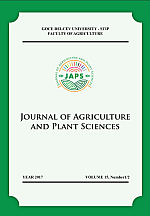BIOINDICATION ABBILITY OF Hypnum cupressiforme AND Homolothecium lutescens FOR DERMINATION OF ARSENIC DISTRIBUTION IN ENVIRONMENT
Abstract
Atmospheric dust emissions can be threat for the environmental and human health. Long-term emission occurs in this area due to the Pb-Zn hydrothermal exploitation (Sasa and Zletovo mines) and copper ore exploitation and flotation (Bučim mine), in the area of Bregalnica river basin. The present study propose a combined model based on: bioindication with moss species (Hypnum cupressiforme and Homolothecium lutescens), and universal kriging mapping for determination of arsenic distribution. For that purpose, 149 moss samples were collected from the area, and both moss species were used interchangeably. At the same sampling points, soil samples from the surface layer were also collected. Mass spectrometry with inductively coupled plasma (ICP-MS) was used for determination of total arsenic content in moss and soil samples. Prior to analysis, the samples were totally digested with the application of microwave system for samples digestion for moss samples and open wet digestion was used for total dissolution of soil samples. Spatial distribution maps were constructed for determination and localizing of narrower areas with higher contents of arsenic. The content of arsenic in moss tissue (regarding air-born dust) ranges from 0.05 mg/kg to 4.28 mg/kg, while distribution of arsenic in soil samples ranges from 3 to 261 mg/kg. Dominant lithogenic occurrence of arsenic was correlated with areas of Neogene pyroclastites (volcanism).
Downloads
Published
Issue
Section
License
The intellectual property and copyright on the original content of all scientific contributions in the published paper shall remain with the authors. Authors give permission to the JAPS owner to publish the paper. All authors agree to publish the paper under Attribution-NonCommercial-NoDerivatives 4.0 International license (CC BY-NC-ND 4.0).

